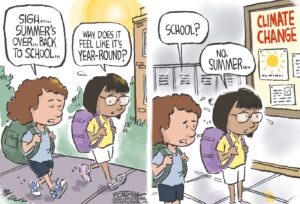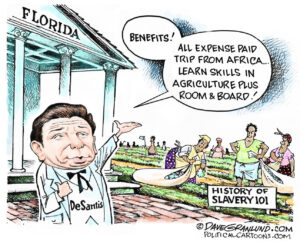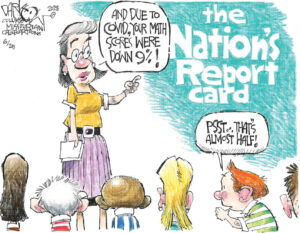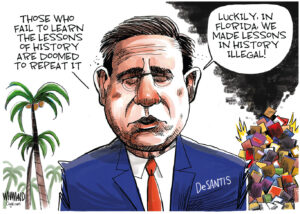Paul Cummins: Turning Around L.A. Unified
We're never going to make any progress reforming the nation's most dysfunctional school systems unless we first address the segregation that partitions our communities.We’re never going to make any progress reforming the nation’s most dysfunctional school systems unless we first address the segregation that partitions our communities.
LOS ANGELES — What would it take? To truly turn around Los Angeles Unified School District, a school system that is at once the nation’s second-largest and one of its most under-performing — even, as many have argued, the most dysfunctional in the country; what would it take?
Not a quick fix. Not a silver bullet. Not simply a new superintendent, not simply a new program — Open Court or LAEP — not simply more systems of accountability to raise test scores a percentage point or two for a few years. Not Leave No Child Behind, not raising the per-pupil expenditures by a few hundred dollars.
Not that all of the above cannot, will not or do not help. And not that all the above shouldn’t be supported. But before we think any given fix will work, we need to define the problems more accurately, more honestly and more profoundly. You don’t cure an illness by treating only the symptoms. Test scores are a symptom. Dropout rates are a symptom. So, too, are gang domination, early teen pregnancy and childbirth, drugs and eating disorders, and teen suicide. All are symptoms of a fractured society, and until we fully acknowledge the breadth and depth of these fractures, we will not “fix” any school district. William Faulkner, in his 1950 Nobel Prize speech, wrote, “… we have sustained our problems of the spirit so long … by now that we can even bear it.” But bearing it is not solving it.
The problems of our schools, I believe, are problems of the spirit. Leadership which fails to acknowledge and confront that reality will fail, and we along with it. Our primary spiritual failure is our disregard for real community. In Los Angeles, we are a balkanized city. We have a Koreatown, a Chinatown, a Little Tokyo; we have districts that are predominantly Jewish or Armenian or Vietnamese or Latino and on and on. But this is not real diversity — it is simply separate groupings that have little to do with each other. We have schools that are 99 percent Latino, 99 percent African-American or 99 percent Caucasian.
But beyond and almost superseding this, we have rich and poor. The neighborhoods and schools that are predominantly rich are also predominantly white, and the predominantly poor in Los Angeles are not white. This is not a startlingly new observation, but the failure to deal with it and the inequities these societal divisions impose on our children and youths represent a major failure of our country. Raising test scores a few percentage points may make some people feel good, but it will do little to change the lives of the desperately poor, foster children, gang-controlled youths, incarcerated youths and other youths destined for the ranks of the dropouts, the unemployed, the homeless, the “permanently unemployed,” the victims of crime, drugs, rape, etc.
So, real solutions? First, acknowledge that we have thousands of throwaway children and youths in our big cities and rural slums. Two, acknowledge that the Third World is right here in our own country and that day-to-day tragedies occur under our societal radar screens. Three, make the funding of known solutions and successful nonprofit organizations and public projects our highest priority. Four, hold a series of public and privately funded national summits to evaluate and make action plans for attacking the problems referred to above. Nothing short of a national resolve will fix LAUSD and all the LAUSDs across the land. Our children warrant such an effort.
Your support matters…Independent journalism is under threat and overshadowed by heavily funded mainstream media.
You can help level the playing field. Become a member.
Your tax-deductible contribution keeps us digging beneath the headlines to give you thought-provoking, investigative reporting and analysis that unearths what's really happening- without compromise.
Give today to support our courageous, independent journalists.






You need to be a supporter to comment.
There are currently no responses to this article.
Be the first to respond.